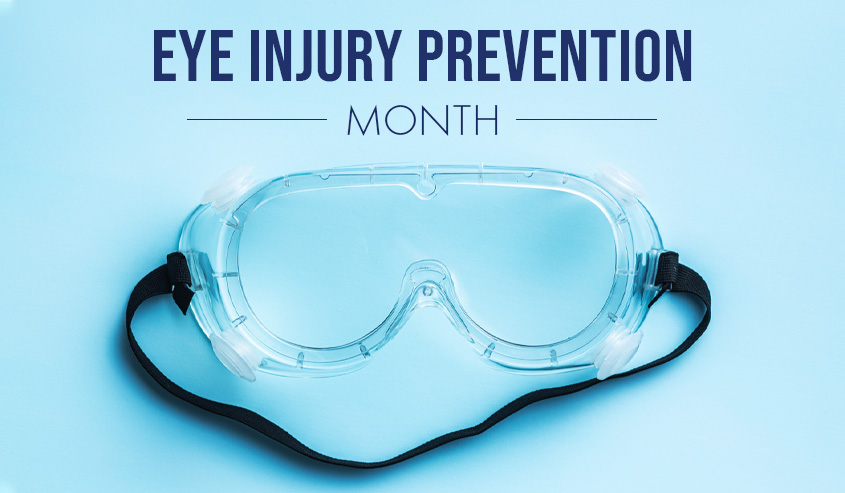
Eye Injury Prevention Month is a time dedicated to raising awareness of better eye health. During this time, ophthalmologists, opticians, and optometrists will be encouraging you to protect your eyes from accidental injuries. Over a million individuals are impacted by eye injuries every year, 90% of which could have been avoided by wearing protective eyewear or safety goggles.
Pertinent Facts and Statistics
One of the primary causes of visual impairment among Americans is an accidental eye injury. However, eye injuries aren’t always caused by chemical burns, cuts, dust, or foreign bodies lodged in the eye. They can also be damaged by the sun. Here are a few additional facts and statistics to be aware of:
- Chemical burns, cuts to the eye, and foreign bodies stuck in the eye are considered emergencies and warrant immediate medical attention. NEVER try to treat an eye injury yourself.
- In cases involving chemical burns, flush the eye with clean, clear water and seek medical help immediately.
- Men are more prone to eye injuries than women.
- The primary causes of eye injuries include battery acid, fireworks, household chemicals, cleaners, and sports accidents as well as workshop and yard debris.
It’s always advisable to wear protective eyewear when using cleaning chemicals, while jump-starting your vehicle, or whenever you’re working in your workshop or yard. In addition to this, the American Academy of Ophthalmology recommends visiting your eye doctor for a comprehensive eye exam every 1 or 2 years. There are many hidden eye ailments that you may not be aware of but might be affecting your eyesight, such as glaucoma or cataract.
Diagnostic Imaging and Eye Health
There are two types of diagnostic imaging procedures that play a role in eye health. The first is OCT or optical coherence tomography. This is a non-contact, non-invasive imaging device that creates detailed 3D and cross-sectional images of the eye using a laser-like light source. It enables ophthalmologists to discover early signs of diseases before traditional testing methods can detect them.
Another type of imaging that is commonly used is retinal imaging which takes a digital picture of the blood vessels, optic disk, and retina in the back of the eye. This enables the ophthalmologist or optometrist to check your eye health and discover certain eye diseases by providing a much wider view of the retina. To learn more about our medical diagnostic imaging services or to schedule an appointment, call Vital Imaging today at 305.596.9992.
